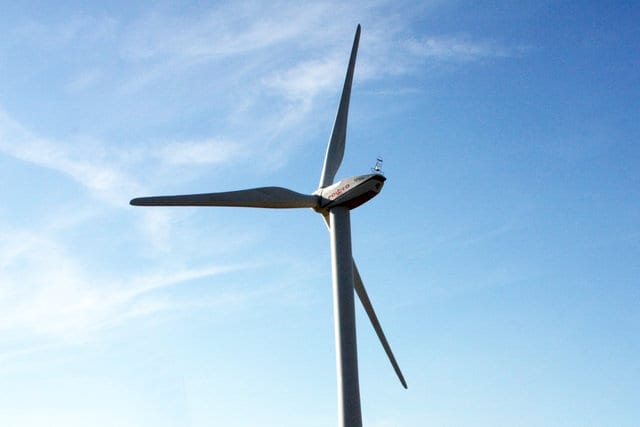World’s first airborne wind energy system goes live in Alaska
March 27, 2014Airborne wind turbine is now operational in Fairbanks
 The world’s first airborne wind turbine has begun operation in Fairbanks, Alaska. The turbine is designed by Altaeros Energies, which is a startup spun off from the Massachusetts Institute of Technology. The turbine itself is called the BAT-Buoyant Airborne Turbine and is meant to over some 1,000 feet off the ground in order to generate electrical power. The turbine will be in operation for approximately 18 months as developers study its energy generation capabilities.
The world’s first airborne wind turbine has begun operation in Fairbanks, Alaska. The turbine is designed by Altaeros Energies, which is a startup spun off from the Massachusetts Institute of Technology. The turbine itself is called the BAT-Buoyant Airborne Turbine and is meant to over some 1,000 feet off the ground in order to generate electrical power. The turbine will be in operation for approximately 18 months as developers study its energy generation capabilities.
Airborne turbines are simple in concept, but present serious logistic challenges
Airborne wind turbines have received modest attention over the years. The concept behind these turbines is relatively simple. Wind currents are typically stronger and more consistent at higher altitudes, boasting of higher degrees of energy potential. Airborne turbines could take advantage of this potential, using these strong wind currents to produce electrical power. Making use of airborne wind turbines is much more complicated than it sounds, of course, and designing a turbine that can reliably hover in the air without being damaged has proven to be a difficult task.
New turbine could produce twice as much electrical power as their grounded counterparts
The turbine developed by Altaeros Energies is filled with helium and is anchored to the ground. The turbine is expected to produce twice as much electrical power than its ground-based counterparts. This electricity will be used to help power Fairbanks, Alaska. Altaeros Energies plans to further develop this project in the future, suggesting that airborne wind turbines could be used to provide electrical power to remote communities, disaster-stricken regions, and military bases.
Wind energy struggles to make progress in the US
Wind energy has made strong progress in the U.S., but the support that this form of clean power has received from the federal government has begun to diminish. At the beginning of the year, the Production Tax Credit was allowed to expire. This federal initiative had provided financial support to various wind projects throughout the country. While some of these projects will continue to receive financial aid due to the provisions of the Production Tax Credit, many others are having to turn to the private sector for the funding that they need.

 With over 15 years of reporting hydrogen news, we are your premier source for the latest updates and insights in hydrogen and renewable energy.
With over 15 years of reporting hydrogen news, we are your premier source for the latest updates and insights in hydrogen and renewable energy.